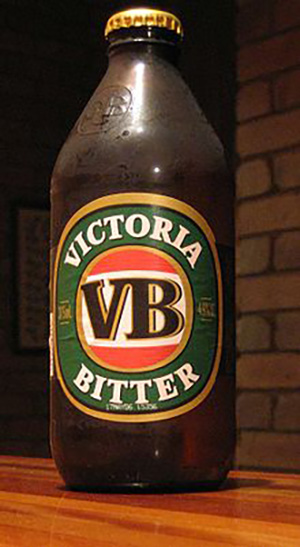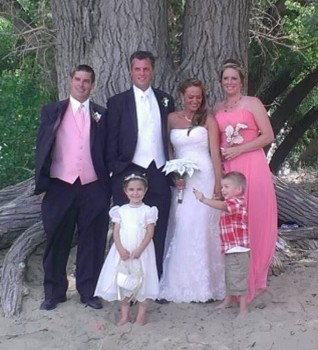While working in the Induction Heating industry as a field service engineer, time and time again, I found myself saying “If I were designing this machine, I would do it this way”.
It was sometime in 2007, a customer of my former employer was having trouble with a machine. I helped them diagnose the issue over the phone and shipped them parts to repair the machine….. 3 times within a few days.
Each time I came to the same conclusion, it was either a failed inverter switching device or the inverter driver board. Now normally if the customer couldn’t diagnose and repair with my help over the phone on the first attempt, I would have been on the next flight to get their machine back up and running. The problem was that this customer was on the other side of the globe in Australia.
By the third failed attempt the customer finally bit the bullet and asked for a service call. In discussions with the customer, they suggested that in order to expedite my entry into the country that I claim that I was going to Australia for “Holiday”.
I thought, what a great idea… In fact, I am going to take someone with me and enjoy the down under! I immediately called my girlfriend at the time (now my beautiful wife) and said, can you get a couple weeks off from work and go to Australia with me? She was excited at the opportunity but unfortunately, she had just started a new job and wasn’t able to take vacation for a year. I then called my brother and made the same offer. He said, “that sounds awesome!” and his time off request was approved later that day.
Within 48 hours, we were on a flight….. Nearly 20 hours later we were on the ground in Sydney attempting to enter the country. After a solid 30 minutes of questioning by the authorities as to why we would just last-minute book flights from the US to Australia for holiday they finally let us through.

Melbourne, Australia. Aerial city skyline from helicopter. Skyscrapers, park and lake
A brief flight to Melbourne, where the customer picked us up for a 2-hour drive and we were finally standing in front of the machine. In less than 2 minutes, I had confirmed that the switching devices were fine and that the driver board was missing a gate pulse. I then wondered why the replacement parts did not fix the machine. Upon investigation, I found shipping damage consistent with all 3 packages. The guys at the shop said that the packages were open when they arrived. Ah-ha! Customs was opening the packages and not re-packing them. I broke out a soldering iron and went to work to make a good driver board out of the remnants that were on-site. Less than 45 minutes after my arrival I had a functional driver board installed and the machine was heating a part.
The owner of the company quickly got word that the machine was running and walked out to investigate. I explained my findings, he witnessed parts getting heated and then he seemed quite upset. He stormed off to the office with a departing cuss word. I was baffled at his response. He came out 5 minutes later, with a 12 pack of Victoria Bitter in hand. He put the 12 pack down in front of us and declared “it’s time to drink”.
The holiday begins….. 24 hours of travel, for less than an hour to fix the machine and the remainder of our two weeks were an amazing time!
4 years later, my wife and I had started our own company – ESC Induction. When designing my first machine I drew on multiple instances like the one described here to finally put my “I would do it this way” statements to the test.
One example of this was to minimize the troubleshooting that the end user would need to do to diagnose the machine over the phone.

I thought about all the times that I had asked a customer to get a multimeter and cautiously reach into the high voltage cabinet to get a measurement. I then designed a single diagnosis screen into our PLC based controls wherein everything that could conceivably be measured with a multimeter was placed.
I thought about how many times I had asked a customer to decern if the switching devices or the driver board were the issue with rudimentary measurements with a multimeter because they did not have access or the expertise to utilize an oscilloscope.
This led to me designing a modular inverter wherein if an inverter is deemed likely to be the issue, the entire inverter is swapped in a few minutes, including the switching devices, the driver board, the cooling surfaces, and the inverter capacitor are all changed simultaneously. Then the inverter can be shipped back to our factory and refurbished by the experts.
My other goal in designing a new Induction system was to achieve higher efficiencies than the rest of the market had achieved. Not only achieving efficiency improvements by reduction of waste energy, but also achieving throughput efficiencies in our customers production by minimizing downtime in troubleshooting and repairing.

Over the years, our team at ESC Induction have continued the tradition of drawing on field experiences. Our systems have evolved into what many of our customers claim to be the best on the market. Easiest to troubleshoot, simplest to repair, and less power consumption for the same throughput.

And that “holiday” trip to Australia was my brothers’ introduction of the Induction Heating industry. Which piqued his interest in what I had made my career and like many of us in the industry, he was “hooked”. In fact, after the trip, I asked my girlfriend, Tracy to marry me. She said yes, pictured above for proof, and her and I started our own business. My brother, also my best man, was our first hire and still is a key part of our business’s success today.
Autor: Shawn Davis, President at ESC Induction.
